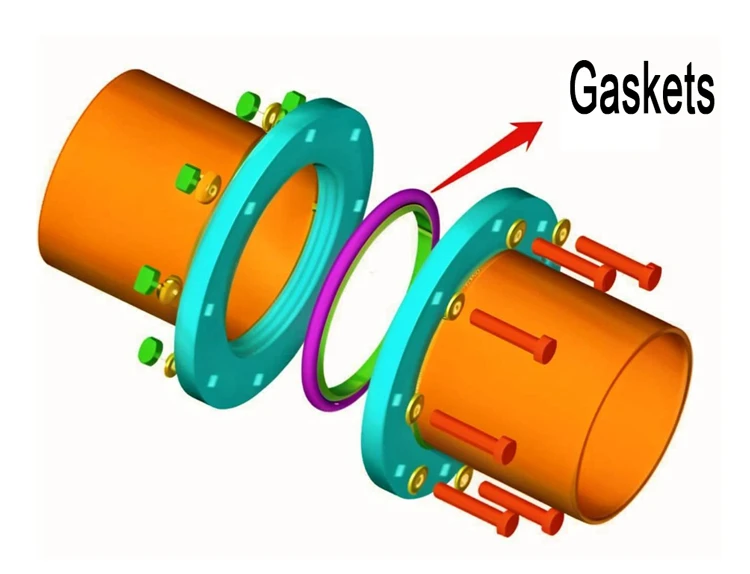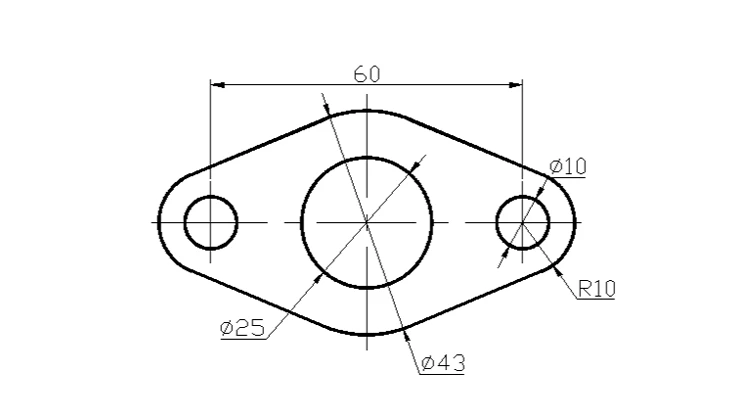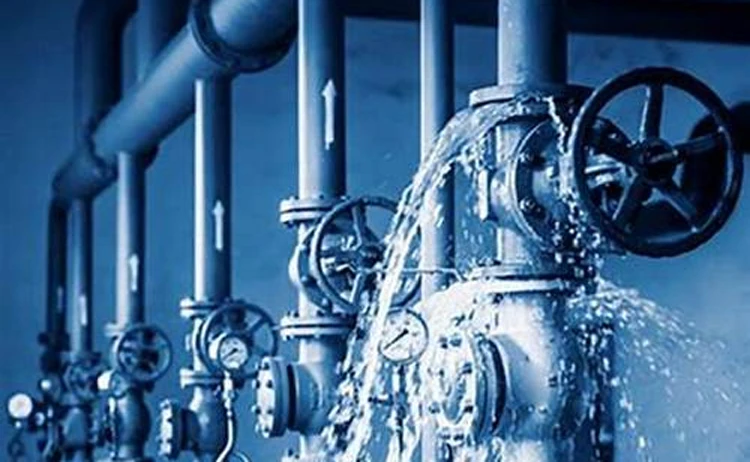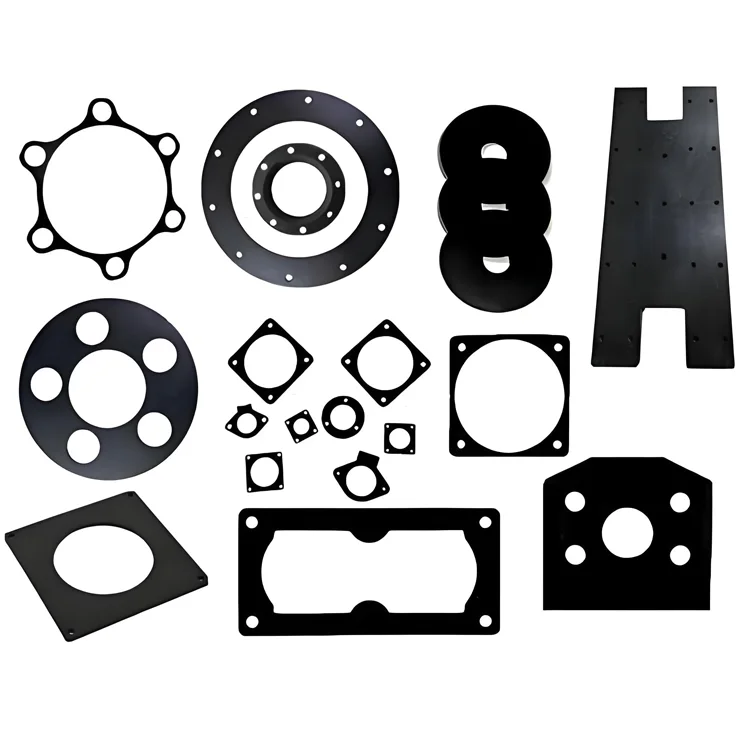I. Introduction: Why You Need This Guide
Gasket failure is one of the most overlooked yet devastating causes of industrial equipment breakdown. A single poorly selected or designed rubber gasket can compromise system pressure, cause leaks, corrode components, trigger safety hazards, and lead to unplanned downtime that costs thousands—if not millions.
As a procurement professional, you’re constantly faced with the challenge of balancing cost, performance, and compliance. Yet even with years of experience, gasket issues still rank high on maintenance reports—why? Because the small details in material choice, compression behavior, and installation techniques often go unnoticed until a failure occurs.
In this ultimate guide, I’ll walk you through everything you need to know about rubber gaskets—from choosing the right materials and understanding key design parameters to analyzing real-life industry applications and learning how to reverse-diagnose gasket failure. Whether you’re sourcing for food-grade machinery, high-temperature flanges, or complex sealing in EV battery packs, this is the systematic framework I wish I had when I started.
Here are proven solutions to make sure your gaskets seal right, last long, and never compromise your system again.

II. The Basics: How Gaskets Protect Industrial Systems
2.1 The Core Functions of Gaskets
Rubber gaskets are more than just leak stoppers. While sealing is their primary role, they also act as shock absorbers, thermal insulators, electrical barriers, and even EMI (electromagnetic interference) shields in some applications. Depending on the industry, a gasket might be expected to perform multiple roles simultaneously—making correct material selection and design crucial.
There are two fundamental categories of gasket usage:
- Static Sealing: The gasket sits between two stationary components. Common in flanges, enclosures, and low-motion machinery. Compression set resistance and long-term sealing are vital here.
- Dynamic Sealing: The gasket experiences relative motion between surfaces, such as in engine parts or pistons. Here, wear resistance, resilience, and friction behavior must be considered.
Understanding whether your gasket is in a static or dynamic environment is the first step to choosing the right material and design.
2.2 The 5 Major Consequences of Gasket Failure
When a gasket fails, it rarely happens quietly. The aftermath can be costly and dangerous. Here are five common outcomes:
- Leakage and Contamination: A poor seal allows fluids or gases to escape, leading to contamination of products or environments.
- Corrosion of Equipment: Leaked fluids can cause long-term chemical damage to surrounding metal surfaces.
- Energy Loss: Systems lose pressure or vacuum, affecting performance and efficiency.
- Safety Hazards: Leaks in chemical or high-pressure systems can pose explosion, poisoning, or fire risks.
- Production Downtime: Replacing failed gaskets often requires halting operations—resulting in major losses.
“A $2 gasket can prevent a $2 million disaster—if properly chosen and maintained.”
This foundational knowledge prepares you for the next step: selecting the right rubber material for your application.
III. Materials Matter: Choose the Right Rubber, Boost Success by 80%
Selecting the right rubber material is the single most influential factor in gasket performance. Choose wrong, and you risk premature failure. Choose right, and you extend system life, reduce maintenance, and ensure safety.
3.1 Performance Comparison of 6 Common Rubber Materials
| Material | Temperature Range | Chemical Resistance | Cost | Typical Applications |
|---|---|---|---|---|
| Viton (FKM) | -20 to 250°C | Excellent resistance to oils, acids, and solvents | High | Petrochemical, aerospace, chemical seals |
| Silicone Rubber | -60 to 200°C | Food-safe, high heat resistance | Medium-High | Medical equipment, food processing lines |
| EPDM | -40 to 140°C | Excellent ozone, steam, and weather resistance | Medium | Automotive sealing, construction gaskets |
| Nitrile (NBR) | -30 to 120°C | Superior oil and fuel resistance | Low | Lubrication systems, fuel lines |
| Natural Rubber | -50 to 80°C | Excellent elasticity, poor oil resistance | Low | Shock absorbers, vibration pads |
| Neoprene (CR) | -35 to 120°C | Good aging, flame, and chemical resistance | Medium | Industrial machines, insulation tapes |
Choose materials not just based on temperature or chemicals—but on your complete operating environment.
3.2 3 Traps to Avoid in Material Selection
Even experienced buyers can fall into these common pitfalls:
- Trap #1: Static Temperature ≠ Real-World Operating Conditions
A material rated for 200°C may fail if exposed to rapid thermal cycling or continuous pressure during operation. - Trap #2: Ignoring Mechanical and Compression Properties
Chemical compatibility alone isn’t enough. Look at compression set, tensile strength, and elongation, especially for dynamic or high-pressure environments. - Trap #3: Cost-Only Thinking Increases Total Cost of Ownership (TCO)
Low-cost rubber often leads to early failure, increased downtime, and repeated replacements—costing far more in the long run.
“A well-chosen rubber compound can increase gasket lifespan by 2–5 times, cutting maintenance costs dramatically.”
In the next section, I’ll show you how design parameters like compression rate, surface roughness, and pressure-temperature interaction play a critical role in sealing success.

IV. Design Insights: 4 Key Parameters Engineers Often Overlook
Even with the right material, a poorly designed gasket can still fail. That’s why understanding the engineering behind gasket behavior is essential—especially under real-world conditions. Here are four often-overlooked yet critical design parameters that directly impact sealing reliability.
4.1 Pressure–Temperature Coupling Effect
Rubber materials behave differently under combined stress. When both pressure and temperature rise, compression strength drops sharply, leading to seal failure.
- Example: A gasket designed to hold 10 bar at room temperature may deform prematurely under the same pressure at 150°C.
- Tip: Always consult pressure-temperature interaction charts, not just independent limits.
Thermal load weakens mechanical resilience—design margins must account for both.
4.2 Surface Roughness Compatibility
Surface finish directly affects how well a gasket conforms and seals. Too rough, and the rubber can’t fill the voids. Too smooth, and the gasket may slip under load.
- For soft rubbers like EPDM, aim for Ra ≤ 0.8 μm
- For harder rubbers like Viton, Ra ≤ 1.2 μm is acceptable
Match the gasket softness to the flange roughness for optimal contact sealing.
4.3 Compression Set (Permanent Deformation)
Compression set is the percentage of deformation a gasket retains after being compressed and released. Lower values mean better long-term elasticity and seal retention.
- Ideal target: Compression set ≤ 20% for long-life static applications
- Real-world effect: High compression set leads to micro-leaks over time—even if the initial seal was perfect
“A gasket isn’t just about sealing today. It’s about sealing after 6 months of heat, pressure, and vibration.”
4.4 Creep Compensation in Dynamic Conditions
In vibrating or thermally cycled systems, rubber gaskets slowly deform over time—a phenomenon known as creep. To counter this, designs should incorporate:
- Pre-compression margins: Slight oversizing to account for future relaxation
- Spring-loaded flanges or washers: To maintain consistent load during operation
Creep is silent but deadly—design with fatigue in mind.
V. Real-World Applications: 6 Industry Case Studies
To truly understand the power of proper gasket selection and design, let’s examine how different industries tackle specific sealing challenges using tailored rubber solutions.
Case 1: Silicone Gasket in Beverage Filling Lines
- Challenge: Frequent CIP (Clean-In-Place) cycles with high-temperature steam disinfection.
- Solution: Use FDA-certified platinum-cured silicone, capable of withstanding +150°C steam exposure while maintaining flexibility.
- Design Detail: Gasket embedded in a grooved channel to enhance rebound and prevent displacement during pressure changes.
Result: 2x longer lifespan and reduced contamination risk in a hygienic environment.
Case 2: EPDM Gasket in Offshore Wind Flange Seals
- Challenge: High-salt, high-vibration offshore conditions degrade standard materials quickly.
- Solution: Use ozone- and UV-resistant EPDM with customized anti-aging additives.
- Design Detail: Flange interface designed with pre-compression structure to absorb wind-induced vibration.
Result: Zero leaks recorded during 12-month salt spray testing.
Case 3: Dual-Component Gasket in EV Battery Packs
- Challenge: Requires precise sealing under thermal cycling and exposure to electrolytes.
- Solution: Deploy a co-extruded gasket: soft EPDM core for flexibility + outer FKM skin for chemical resistance.
- Design Detail: Inserted into aluminum groove with automated robot assembly for consistency.
Result: Maintains IP67 rating across 1000+ charge/discharge cycles.
Case 4: Pharmaceutical Cleanroom Gasket (Autoclave-Ready)
- Challenge: Sterilization at 121–134°C in high-pressure autoclaves.
- Solution: Use medical-grade silicone with validated biocompatibility.
- Design Detail: Gasket geometry optimized to avoid entrapment and ensure full surface sterilization.
Result: Passed 100 sterilization cycles without cracking or deformation.
Case 5: Viton Gasket in H₂S-Rich Petrochemical Plant
- Challenge: Exposure to hydrogen sulfide (H₂S), solvents, and high process temperatures.
- Solution: Use Viton (FKM) due to its superior chemical resistance and thermal tolerance.
- Design Detail: Increased thickness with controlled compression ratio to avoid over-squeezing.
Result: Maintained seal integrity under 200°C operation and corrosive conditions.
Case 6: Oil-Resistant Gasket in Power Transformer Connections
- Challenge: Sealing transformer fluid while ensuring electrical insulation.
- Solution: Choose Nitrile (NBR) for oil resistance and add silicone coating to enhance dielectric strength.
- Design Detail: Inserted into multi-bolt cover plate with equal-load torque specs.
Result: No leak events across 18-month outdoor field test.
“Every successful application begins with a clear understanding of the real-world stressors the gasket must endure.”

VI. Failure Diagnosis: Reverse-Engineering Gasket Leaks
Even the best gaskets can fail under unexpected stress or installation errors. When leakage occurs, a structured diagnosis can help you pinpoint the root cause and avoid repeating the same mistake. Here’s how to decode what the leak is telling you.
6.1 Leak Type vs. Root Cause: Troubleshooting Table
| Leak Type | Possible Cause | Recommended Action |
|---|---|---|
| Uniform seepage | Insufficient compression force | Check flange flatness and increase bolt torque |
| Jetting or spray | Gasket misalignment or compression offset | Use positioning grooves or realign gasket |
| Cracked gasket | Material degradation or media incompatibility | Upgrade to a more compatible rubber material |
| Localized failure | Bolt torque imbalance | Use calibrated torque wrenches, tighten in cross-pattern |
| Recurrent leak in same spot | Flange surface damage | Resurface mating flanges or use a filler gasket |
“The leak pattern is your best diagnostic tool—read it like a failure fingerprint.”
6.2 The 3-Step Disassembly Inspection Method
When removing a failed gasket, follow these three critical inspection steps:
- Check for Asymmetric Impressions
Examine the gasket’s compression marks. Uneven depth or shape may indicate flange misalignment or bolt torque imbalance. - Measure Thickness Variations with Calipers
A consistent thickness drop across the gasket may suggest over-compression. Large variations could mean mechanical interference or uneven loading. - Identify Chemical Swelling or Softening
If the gasket feels tacky, swollen, or brittle, it’s likely a sign of incompatible chemical exposure or thermal breakdown. Cross-check with the fluid/chemical used and switch to a resistant compound.
Visual clues + measurement + chemical understanding = accurate diagnosis.
In many cases, a failure is not due to a bad material—but a bad match between design, environment, and installation method.
VII. Conclusion: From Selection to Design—Seal It Right, Once for All
Rubber gaskets may look simple, but behind every effective seal lies a careful balance of material science, engineering design, and real-world performance validation.
Let’s recap the essentials:
- Material Matters: Choose rubber types based on actual application demands—not just spec sheets.
- Design Precision: Factor in pressure-temperature effects, surface roughness, compression set, and creep compensation.
- Industry-Proven Solutions: From food-grade silicone to chemically resistant Viton, application-specific case studies show what works—and why.
- Failure Analysis: Reverse diagnostics give you clarity and help prevent repeated gasket failures.
“A gasket that lasts is the result of informed choice, not chance.”
What’s Next?
If you’re unsure which material or design best fits your project, don’t gamble.
Send us your application parameters, such as media, temperature, pressure, and flange conditions—and our engineers will respond with a tailored solution within 24 hours.
Let’s seal it right, the first time.

